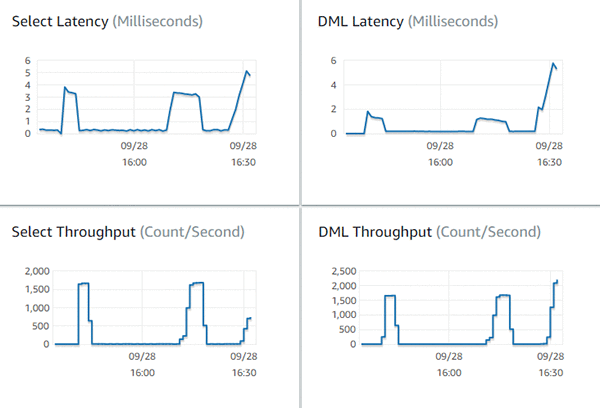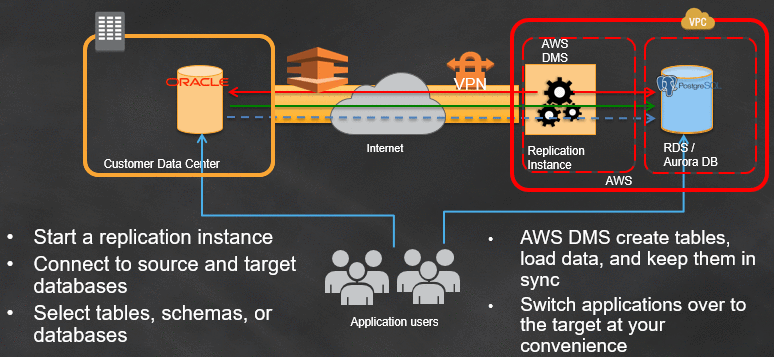AWS Database Blog
Tag: Amazon Aurora
Using Amazon Aurora to seamlessly increase capacity of WordPress database backends
WordPress powers 30 percent of all websites. It is the content management system that we’ve built our business on at Pagely. Our managed WordPress hosting runs entirely on Amazon Web Services. In the same way that Amazon has freed customers from the worries of managing physical hardware and data centers, Pagely enables clients to stop worrying about managing WordPress and instead focus on their mission. Pagely’s dedicated support and experience with successfully running WordPress at scale pairs nicely with Amazon’s technology offerings.
Amazon Aurora for MySQL compatibility now supports global transaction identifiers (GTIDs) replication
In this blog post, we discuss the advantages of GTID-based replication and support of Amazon Aurora for MySQL.
Creating a proof of concept using Amazon Aurora
As customers move to the cloud, they’re looking for the best tools to run their applications. When considering relational databases, Amazon Aurora is a frequent choice. This is no surprise, given that Amazon Aurora is MySQL and PostgreSQL wire-compatible and that it can provide greater throughput than either. Aurora provides up to five times the […]
Deploy an Amazon Aurora PostgreSQL DB cluster with recommended best practices using AWS CloudFormation
In this blog post, I cover how to build a quick start reference deployment of Amazon Aurora PostgreSQL cluster. The cluster is based on AWS best practices for security and high availability and you can create it quickly by using AWS CloudFormation. I walk through a set of sample CloudFormation templates, which you can customize […]
Using the MariaDB JDBC driver with Amazon Aurora with MySQL compatibility
September 2023 update: Version 3.0.3 of the MariaDB JDBC Driver (Connector/J) no longer supports Amazon Aurora. We recommend using the AWS Advanced JDBC Wrapper Driver . The Amazon Web Services JDBC Driver has been redesigned as an advanced JDBC wrapper. This wrapper is complementary to and extends the functionality of an existing JDBC driver to help an […]
Best practices for migrating an Oracle database to Amazon RDS PostgreSQL or Amazon Aurora PostgreSQL: Source database considerations for the Oracle and AWS DMS CDC environment
An Oracle to PostgreSQL migration in AWS Cloud can be a complex multistage process with different technologies and skills involved, starting from the assessment stage to the cutover stage. To better understand details of the complexities involved, see the AWS Database Blog post Database Migration—What Do You Need to Know Before You Start? This blog […]
Best practices for migrating an Oracle database to Amazon RDS PostgreSQL or Amazon Aurora PostgreSQL: Migration process and infrastructure considerations
An Oracle to PostgreSQL migration in the AWS Cloud can be a complex multistage process with different technologies and skills involved, starting from the assessment stage to the cutover stage. This blog series covers the environment and configuration setups for your source Oracle database, the AWS Database Migration (AWS DMS) service, and the target PostgreSQL […]
Analyze Amazon Aurora MySQL Workloads with Performance Insights
In this blog post, we will take a quick tour of the Performance Insights dashboard for the Amazon Aurora MySQL-Compatible Edition and learn to analyze certain performance issues.
Replace SQL Server Agent Job with AWS Step Functions
If you’re migrating from Microsoft SQL Server to Amazon Aurora PostgreSQL, you might have discovered that the SQL agent jobs cannot be easily moved. The job agent tools are not supported for Aurora PostgreSQL. You can overcome this limitation though, by using AWS Step Functions to replace a SQL agent job. In this blog post […]
Replicate data from Amazon Aurora to Amazon S3 with AWS Database Migration Service
In this blog post, I’ll cover how to use an AWS CloudFormation template to automate the configuration that allows you to replicate data between a relational database like Amazon Aurora to Amazon Simple Storage Service (Amazon S3). I’ll walk you through a sample CloudFormation template so that you can customize for your needs. The AWS […]









